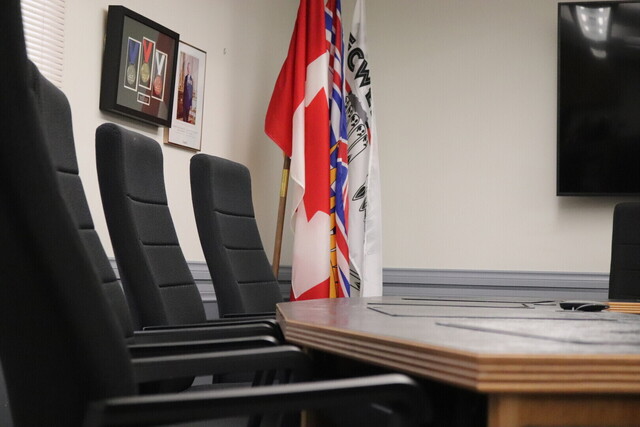As School District 73 trustees prepare to meet with B.C.’s Education Minister Rachna Singh next month, the board has begun prioritizing its concerns about mounting challenges facing Kamloops-area schools.
At Monday’s public meeting, trustees compiled a list of pressing issues they hope to address during their scheduled session at the B.C. School Trustees Association annual general meeting in April. The conversation revealed a district grappling with multiple systemic challenges while trying to meet diverse student needs.
Board Chair Heather Grieve emphasized the importance of strategic preparation. “This is our opportunity to bring our most pressing concerns directly to the minister,” she told colleagues during the discussion. “We need to be focused and clear about what our community needs most.”
Funding emerged as the dominant concern, with trustees highlighting how the current provincial funding model fails to address inflation’s impact on operating costs. Trustee Kathleen Karpuk pointed to the strain on maintenance budgets as a particular pain point.
“When we can’t keep up with basic repairs because our funding hasn’t kept pace with inflation, that’s a serious problem,” Karpuk said. “We’re seeing delayed maintenance across our facilities, and eventually, that catches up with us.”
The growing complexity of classroom needs also dominated the discussion. Trustees noted increasing numbers of students requiring specialized supports, creating challenges in a funding framework that hasn’t adequately evolved to meet these demands.
“We’re seeing more students with complex needs in our classrooms every year,” noted Trustee Diane Jules. “Our teachers and support staff are doing incredible work, but they need proper resources to provide the kind of education these students deserve.”
Capital funding constraints have hampered the district’s ability to address facility needs, with several aging schools requiring significant upgrades or replacement. The board plans to highlight specific projects, including the long-awaited Pineview Valley Elementary School, which remains in the planning stages despite growing enrollment pressures.
Recent Ministry of Education data shows SD73 enrollment has increased by approximately 3% over the past three years, while capital funding allocations have not kept pace with inflation or growth projections. The district currently serves over 15,000 students across its schools.
The meeting agenda also prioritized mental health services, with trustees expressing concern about limited counselling resources. According to the Canadian Mental Health Association, approximately 1 in 5 children and youth in B.C. experiences mental health challenges, yet school-based support resources remain stretched thin.
Trustee Shelley Sim advocated for bringing specific examples to the minister. “We need to show concrete cases of how these funding gaps affect real students in our community,” she said. “This isn’t about abstract budgets – it’s about children who need our support.”
The board also plans to discuss transportation challenges, particularly for rural students facing long commutes. Some families in outlying areas report bus rides exceeding 90 minutes each way, creating barriers to participation in extracurricular activities and adding stress to students’ days.
Indigenous education funding will feature prominently in the discussions as well. The district, which serves students from several First Nations communities including Tk’emlúps te Secwépemc, has made progress on Indigenous education initiatives but requires sustainable funding to expand these programs.
“Our Indigenous education programs need consistent, predictable funding,” explained Trustee Jules. “We’ve built strong relationships with local First Nations, but implementing the meaningful education called for in the Truth and Reconciliation Commission requires proper resources.”
Superintendent Rhonda Nixon noted that while the district appreciates recent provincial investments in education, persistent gaps remain. “We’re grateful for initiatives like the school food program funding, but we need to address structural issues in how schools are funded,” Nixon said.
The board voted to finalize their priority list at their next committee meeting, with plans to create a focused briefing document for Minister Singh. Trustees emphasized the importance of speaking with a unified voice when advocating for district needs.
Community advocates have expressed support for the board’s approach. Sarah Johnson, president of the Kamloops Parents Advisory Council, told me in a conversation last week that families are increasingly concerned about resource limitations.
“Parents see the effects of tight budgets every day – from larger class sizes to fewer supports for struggling students,” Johnson said. “We’re hoping the minister listens carefully to what our trustees have to say.”
The meeting with Minister Singh represents a key opportunity for the district to influence provincial education policy as the government develops its budget priorities for the coming fiscal year. Education funding comprises approximately 12% of British Columbia’s annual budget, with ongoing debates about whether this allocation sufficiently addresses modern educational challenges.
As the meeting date approaches, the board plans to gather additional input from teachers, staff, and community members to strengthen their case for increased support. Whether these efforts will translate into meaningful funding changes remains to be seen, but trustees appear determined to make the most of their opportunity to speak directly with the province’s education leader.






